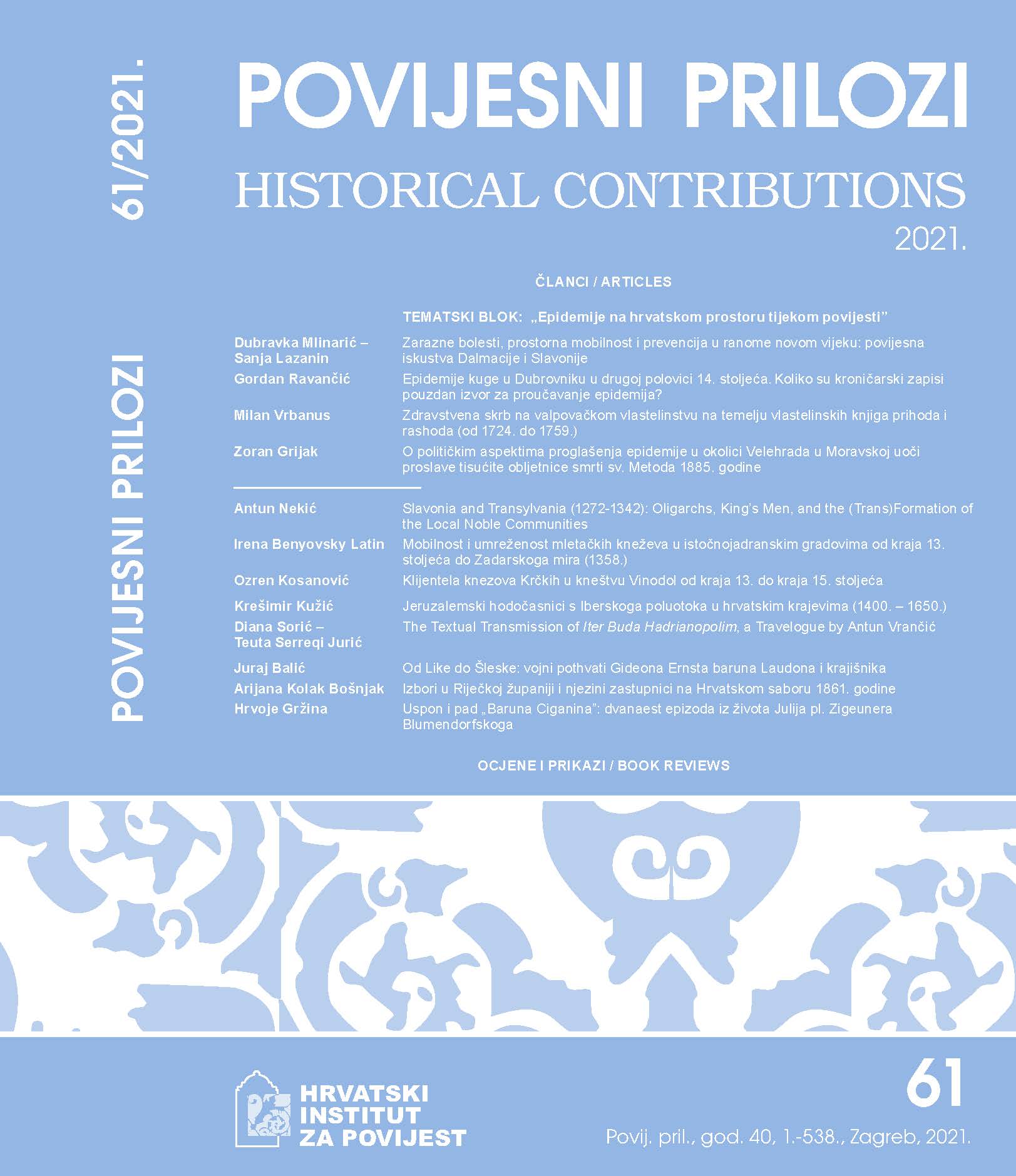Slavonia and Transylvania (1272-1342): Oligarchs, King’s Men, and the (Trans)Formation of the Local Noble Communities
DOI:
https://doi.org/10.22586/pp.v40i61.15481Keywords:
Medieval Hungary, medieval Slavonia, medieval Transylvania, general assembly (congregatio generalis), oligarchs, nobility, regional identityAbstract
Historians have long identified the structural similarities between the positions of Slavonia and Transylvania within the conglomerate of territories bound to the Crown of St Stephen (Archiregnum Hungaricum), but their comparison has never surpassed the superficial level of juxtaposing the quasi-regal authorities of the ban and the voivode. Considering the period from the 1270s until the 1340s, this paper primarily focuses on the general assemblies that took place in these two provinces and looks at the formation of regional identities linked to the nobility’s collective action of coming together in assemblies. Through this prism it also analyzes the functioning of composite political structures and the relationship between the center and the specific localities. Political instability triggered the first assemblies in both provinces, and from the 1270s until 1290s local processes mirrored the decisions and actions of the royal court, as was the case with almost all the assemblies held in Slavonia during the 1270s, and it was the same with the Transylvanian cases form 1288 and 1291. However, in Transylvania, in contrast to Slavonia, the assemblies continued to be held without incentive from the royal court, that is they became a part of the local repertoire. These different experiences in the early period had a strong impact on the nobility and its power of collective action from the 1320s, when the programme of restoration of royal authority was carried out in both provinces by using the same mechanisms.
Downloads
Published
How to Cite
Issue
Section
License
Copyright (c) 2021 Authors and journal

This work is licensed under a Creative Commons Attribution-NonCommercial 4.0 International License.







